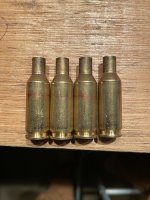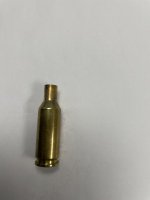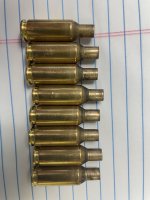Hello everyone, looking for advise regarding neck separation.
These are the specifics:
-Lapua Brass, 27 inch barrel
-3-4 firings, no annealing
-Overall length grew by 2-3 thou, no trimming
-30.5 gr of shooters world precision pushing 105s at 2860(barrel sped up after last match)
Running one thou neck tension with .268 bushing
-bumping shoulder 1-2 thou
Seems like the split is starting from neck shoulder junction.
Any help with this would be appreciated
These are the specifics:
-Lapua Brass, 27 inch barrel
-3-4 firings, no annealing
-Overall length grew by 2-3 thou, no trimming
-30.5 gr of shooters world precision pushing 105s at 2860(barrel sped up after last match)
Running one thou neck tension with .268 bushing
-bumping shoulder 1-2 thou
Seems like the split is starting from neck shoulder junction.
Any help with this would be appreciated
Attachments
Last edited:




